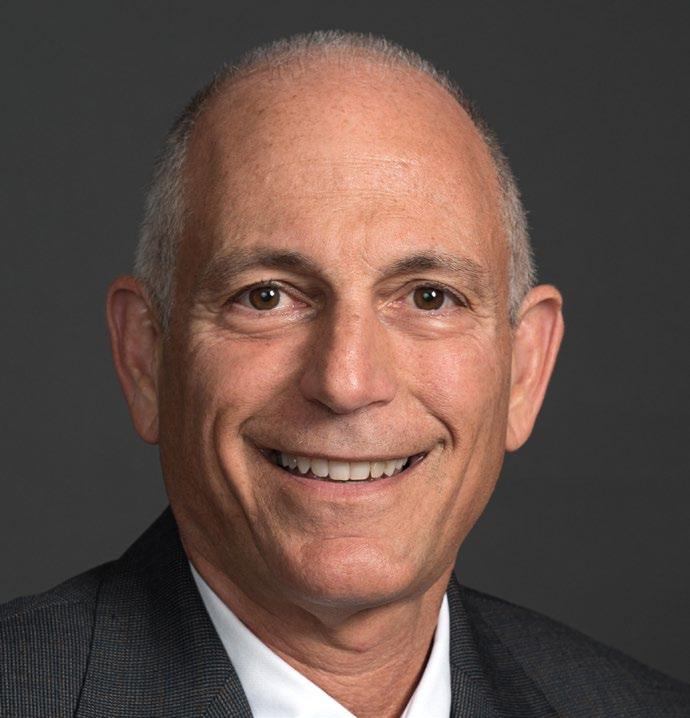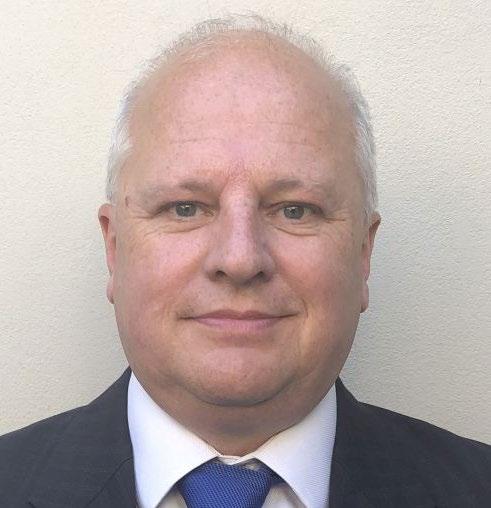
8 minute read
BWTS
from CSI Summer 2021
by Maritime-AMC
Clean Shipping International talks to ballast water treatment system manufacturers about their views on compliance monitoring devices — and discovers a mixed response
CMDS CAUSE WIDE DEBATE
In an American Bureau of Shipping roundup of the International Maritime Organization’s (IMO) 8 March Pollution Prevention and Response (PPR8) Sub-Committee meeting, discussions opened regarding standards for verifying the effectiveness and accuracy of ballast water compliance monitoring devices (CMDs).
These devices are typically used for indicative analysis, which is relatively quick, but less precise than detailed analysis, the class society said.
Despite this varied use of CMDs and the various water conditions in which they may be used, there is no widely accepted protocol for validating such devices.
Building on discussions that began at MEPC74 and PPR6, a group of member states and industry observers submitted a proposed protocol for the verification of ballast water CMDs, in the absence of formal approval requirements for such devices under the Ballast Water Management Convention (BWMC) for consideration.
The proposal included verification parameters of the CMD’s accuracy, precision and detection limits, while also varying the salinity and the size of microbes of the laboratory-prepared challenge water.
There was disagreement on an earlier proposition that verification testing of CMDs should include on-board testing. Some IMO members argued that laboratory testing was preferable because microorganism concentrations in the challenge water could be controlled and varied in a laboratory environment, while others said that laboratory testing of such a device could not simulate the challenging and varying conditions seen in ballast water treatment on board ships.
The current draft suggested using both laboratory and field tests.
There was also some disagreement on whether the IMO should pursue development of a verification standard, due to the fact that the International Organization for Standardization was also pursuing development of a similar standard.
However, most member states agreed that because the use of CMDs are central to enforcement efforts of the BWMC, the Sub-Committee should continue to pursue development of this standard.
The next steps include a re-established Correspondence Group to progress the development of a standard for verification of ballast water compliance monitoring devices and submit a report to PPR9 (Spring, 2022), ABS said.
Clean Shipping International sought the views of ballast water treatment systems (BWTS) manufacturers. Although some said it was not their concern, others were a bit more forthright in their views.
Tore Andersen, Optimarin’s Executive Vice President Sales & Marketing, said: “We at Optimarin have been forced to do on-board testing after commissioning four or five times because the flag has demanded this [Singapore].
“This means that if you simply make a test without preparation, according to an Optimarin guideline this will fail. If the ship follows our guide, it goes without a problem and we have succeeded every time.
“We are, in principle, against this because the laboratory test is much more controlled and with much more challenging water than you can normally find in the areas where the system has been installed. The tanks have to be 100% cleaned and also you have to run the water in and out.
“When it comes to timelines, not too many flags have implemented this and I think many see that this is not the way forward.
“When the system is commissioned, it will be operated for crew training and then demonstrated to class/flag before it is handed over to the owner. If anything is wrong or failing you will be able to see it on the operation screen immediately.
“So, the system is type approved and demonstrated during commissioning and we think that should be enough,” Andersen stressed.
OneTank’s Kevin Reynolds said: “It is our view that CMDs are needed for several reasons: they give confidence that treatment systems are working; they are a means to detect failures that might not be visible otherwise; and they are a way to level the playing field so that all parties work equally hard to ensure compliance.
“These are, however, ideals and actual implementation will take a lot of work to ensure that it is fair, effective, and not overly burdensome.
“Just a few years ago, we did not imagine such a broad and capable marketplace, with so many CMDs to select from. That noted, there remains work to do in order to ensure that devices are providing equivalent answers. No one wants to pass with one device and fail with another.
“This is challenged by the technologies using different methods to perform their assessment. There is a lot of work that is ongoing in order to standardise protocols and standards, including ISO and IMO,” he explained. Mark Riggio, Head of Marine at filter supplier Filtersafe, commented: “Testing ballast water equipment in the laboratory has always been critical to defining the ability of that equipment to meet the discharge standard.
“Field testing has also traditionally been viewed as important to determine how a new product is used in the marine environment. At Filtersafe, most of our learning has come from the experience we gained from thousands of filters operating on ships around the world.
“We view this on-board experience as critical to our success and our ability to deliver on the expectations of our customers. Each type of test has its own objective and we recognise the benefit of both types of tests,” he said.
Ecochlor CEO Steve Candito said: “We certainly support the concept of compliance monitoring as we know our systems works. However, the CMDs provide an indicative analysis — that is, quick, but not as reliable.
“We prefer continuing with a detailed analysis, but only when warranted, not during every regulatory compliance


check. More specifically, if the vessel has shown that they are using the system and operating it properly, there may not be a need to do any analysis.
“On the other hand, if they are not meeting these minimum requirements, then a jump to the detailed analysis, rather than an unreliable, indicative analysis, is not unreasonable. We would also support random detailed analysis to prevent complacency and support overall compliance.
“However, until CMD technology significantly advances in its reliability, spending time on developing test protocols may not be the best use of the industry’s efforts now, since the procedure I described (that is, detailed analysis when warranted and random) likely provides equivalent end goal compliance at much less time and cost.”
Adam Jolliffe, Senior Sales Manager – Maritime, Chelsea Technologies said that a shipowner needs to be sure that their ballast water management system works as intended, at all times.
“Without accurate monitoring, an owner may only find out about a compliance issue on their vessel during deballasting — which can lead to demurrage issues and knock-on costs. In some cases, an owner may only discover an issue when port authorities commence enforcement action.
“These risks mean that shipowners have little margin for error. A compliance monitoring device must use a proven methodology combined with proven sensor technology, and thus requires verification. For example, the FastBallast system uses the proven Single Turnover Active Fluorometry methodology alongside sensors designed and manufactured by Chelsea Technologies that benefit from our 50-plus years in the environmental monitoring industry,” he said. ”IMO and ISO verification processes and standards for compliance monitoring devices have been slow to develop. This is undoubtedly frustrating for shipowners. However, compliance monitoring devices are especially important during the current ‘experience building’ phase of ballast water regulations, as they provide owners and crews with crucial information that can be used to identify and rectify issues.
“This means that shipowners should be securing a compliance monitoring device today. Without clear verification standards for these devices, shipowners are left with the more complex task of discerning a device’s accuracy and reliability through the manufacturer, methodology, and published data for each system.”
Turning to commission testing, while the rules covering commission testing for newbuilding BWTS installations are due to enter into force in June 2022, independent testing facility Maritec believed that shipowners should not be put off in carrying out further testing of a system they consider to have already passed stringent tests during the typeapproval process.


Michael Haraldsson, Maritec’s Global Business Development Manager, said that commission and compliance testing “essentially provides shipowners with a very effective insurance policy” for the BWTS, potentially averting lengthy legal issues. “All installed systems should be regularly tested, but especially after commissioning,” he said. “A typeapproved system works in principle, but in a real-time operational environment, it can be a very different story altogether.
“If a system fails just after installation but before delivery, then the yard or the manufacturer has to fix it. But if the owner does nothing and the system fails after accepting the vessel, there could be a lengthy legal battle.
“Port State Control inspectors could start targeting newly installed BWTS to check for compliance at the first port of call after leaving the shipyard. This will probably be very common in the future.
“If you have spent a million dollars on equipment and installation, an extra few thousand dollars on testing before the ship leaves drydock is a very wise investment. Frequent testing can avoid any operational performance problems, which, if go unchecked, can result in costly delays, fines and environmental damage down the line,” he said.
Gavin Gao, Maritec’s Technical Director, said: “It is very important that testing and sampling procedures are performed correctly and according to IMO and US VGP requirements.
“If an owner wants to operate a system compliant with VGP-2013, for example, the installed BWTS needs to be tested twice in the first year and then once every 12 months.
“The Convention requirements are very strict. We are seeing retrofitted vessels with new systems failing because ballast tanks have not been efficiently cleaned or because valves have been incorrectly fitted. And if you have more than one 50µm organism in every 100l of treated water you will fail the inspection.”











